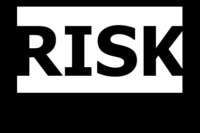 The amount of coverage given to safety-related risk issues at ASSE’s Safety 2013 made us think of how the European Union (EU) is actually ahead of the U.S. safety profession when it comes to embracing risk.
The amount of coverage given to safety-related risk issues at ASSE’s Safety 2013 made us think of how the European Union (EU) is actually ahead of the U.S. safety profession when it comes to embracing risk.
The past year saw the completion of EU-OSHA’s flagship Foresight project, which anticipates longer-term workplace risks (initially in relation to ‘green’ jobs), to stimulate debate, and make clear to decision-makers the implications of particular courses of action.
The European Survey of Enterprises on New and Emerging Risks (ESENER) presents a real-time picture of how some important workplace risks are being managed in Europe, especially psychosocial risks such as work-related stress, violence and harassment. The focus of this project has now shifted to secondary analysis of the data that the initial survey has produced.
The agency has continued to develop its free online interactive risk assessment (OiRA) software, for carrying out risk assessments in a straightforward and cost-effective way. Specific tools are being made available covering hairdressing and office work in Cyprus, road transport in France, and the leather and tanning industry throughout the EU.
The European Risk Observatory
The aim of EU-OSHA’s European Risk Observatory (ERO) is to identify new and emerging risks in occupational safety and health, in order to improve the timeliness and effectiveness of preventive measures. To achieve this aim, the ERO provides an overview of safety and health at work in Europe, describes the trends and underlying factors, and anticipates changes in work and their likely impact on occupational safety and health.
Risk anticipation is the key objective identified for the European Risk Observatory in the Community Strategy 2007-2012. Following consultation and debate with experts and stakeholders, it was agreed that a working definition of "emerging OSH risks" is any occupational risk that is both new and increasing.
By “new” the ERO means that:
- the risk did not previously exist and is caused by new processes, new technologies, new types of workplace, or social or organizational change; or,
- a long-standing issue is newly considered as a risk due to a change in social or public perceptions; or,
- new scientific knowledge allows a long-standing issue to be identified as a risk.
The risk is “increasing”if the:
- number of hazards leading to the risk is growing; or
- the exposure to the hazard leading to the risk is increasing (exposure level and/or the number of people exposed); or
- the effect of the hazard on workers' health is getting worse (seriousness of health effects and/or the number of people affected).
The first steps to identify emerging risks were taken with the publication of four expert forecast reports which have covered physical, biological, psychosocial and chemical emerging risks. These reports are the result of expert consultation through a Delphi methodology, and they have been followed up with numerous literature reviews and in-depth reports in order to explore the top risks identified in the expert forecasts, such as workplace exposure to nanomaterials.



